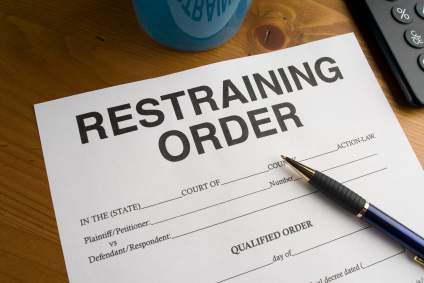 Restraining Orders are Court Orders designed to protect individuals from others who have previously harmed, abused or harassed them by prohibiting abusers from coming into close proximity to those who have filed for the restraining order. Restraining Orders direct an alleged abuser to stay away from the victim and/or specific locations, including the home or work place of the abused. Each victims circumstance is different and there are many options that you can seek in the Request for Restraining Order, including but not limited to, child custody, child stay away Orders and/or financial orders.
Restraining Orders are Court Orders designed to protect individuals from others who have previously harmed, abused or harassed them by prohibiting abusers from coming into close proximity to those who have filed for the restraining order. Restraining Orders direct an alleged abuser to stay away from the victim and/or specific locations, including the home or work place of the abused. Each victims circumstance is different and there are many options that you can seek in the Request for Restraining Order, including but not limited to, child custody, child stay away Orders and/or financial orders.
So when might you need a Restraining Order?
Some offenses that could compel a judge to sign a Restraining Order are as follows:
Assault
Burglary
Trespassing
Terrorist Threats
False Imprisonment
Harassment
Kidnaping
Lewd Behavior
Stalking
Sexual Assault
If you’re the victim of one of these crimes in California and you wish to seek a Restraining Order from your abuser, you will need to fill out, at a minimum, the following Judicial Council Forms:
. Temporary Restraining Order (pdf)
. Notice of Court Hearing (pdf)
Restraining Orders Process Service
Depending on your situation and County, there may be additional forms you need to fill out and file with the Court. You can begin the process by clicking on the above links that you navigate you to the forms. If you need any assistance and/or have questions regarding the forms, you can seek the advice of an attorney, or, your local Courthouse may have a Domestic Violence Unit where they can assist you. It is important you bring any police reports, pictures of injuries or any other evidence you feel may help prove your need for a Restraining Order. In some instances, you may need to give telephonic notice to your abuser of the Restraining Order hearing so it is important you contact either an attorney or the Court to learn what your obligations are.
Once you have complied with the procedural aspect and filed the correct forms with the correct venue, or Court, a Judge will review your Request for Restraining Order. If the Judge finds enough evidence or testimony in support of the Restraining Order, he will sign a Temporary Restraining Order against your abuser. If your abuser is not in Court when the Order is signed, he/she will need to be served with the Temporary Restraining Order by someone other than yourself. The Court will then set another hearing, in approximately three (3) weeks, to decide whether a Permanent Restraining Order is applicable. It is important that you appear at the Permanent Restraining Order hearing otherwise, the Restraining Order will become ineffective at the end of the time frame (usually three (3) weeks) for the Temporary Order.
Restraining Orders are very serious and in this situation, it is very important that you use a trusted source that will ensure your safety and the proper service of the Court documents. Do not attempt to serve the paperwork yourself, it not legal, nor safe. JPL Process Servers are very knowledgeable and experienced in the process and service of Domestic Violence and/or Restraining Orders. If you have a question regarding Restraining Orders or need help serving paperwork, feel free to leave a comment below or give us a call at 866.754.0520. We’d be more than happy to help you get through this difficult time.
